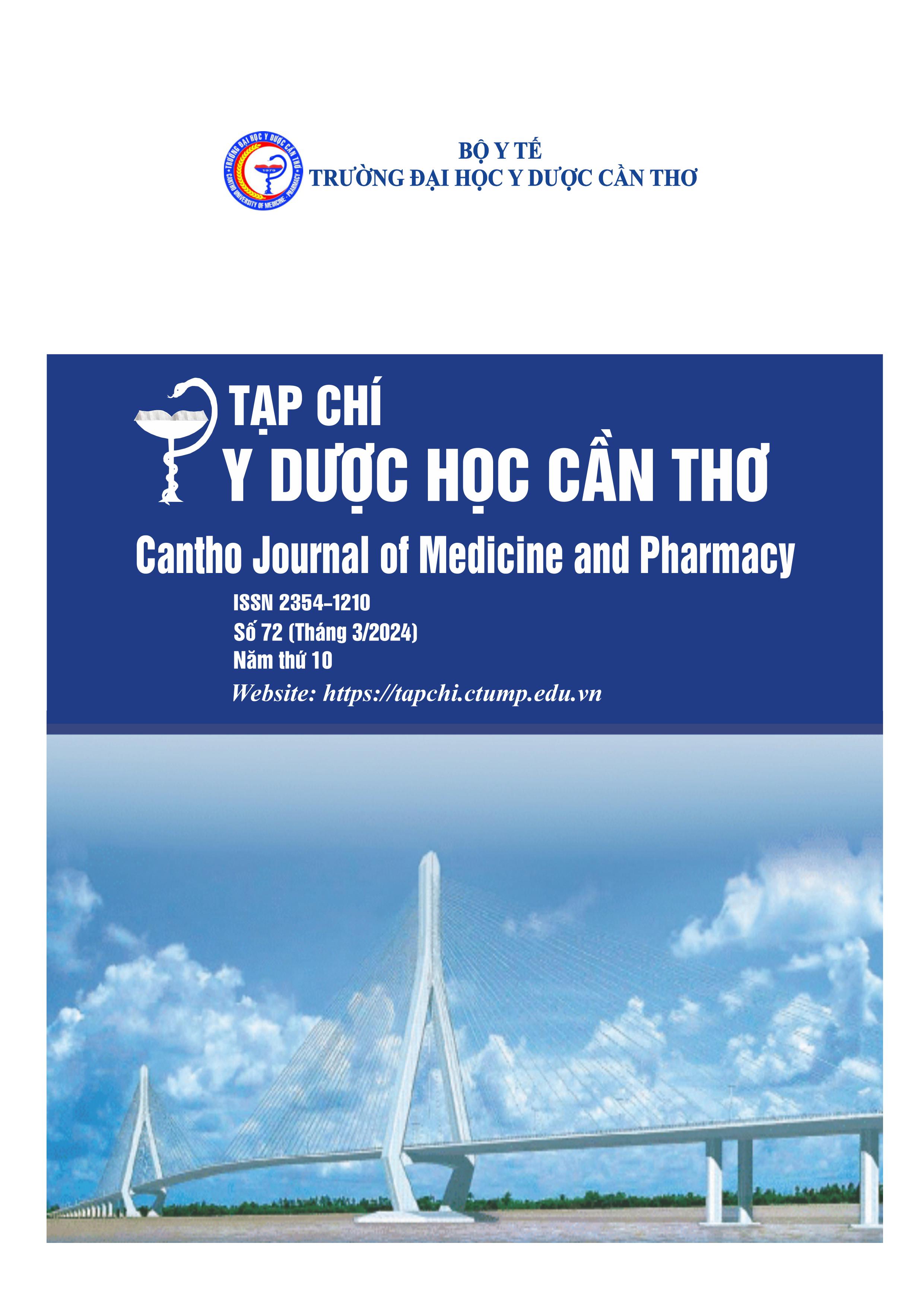CLINICAL CHARACTERISTICS AND QUALITY OF LIFE OF ACNE SCAR PATIENTS AT CAN THO CITY HOSPITAL OF DERMATO-VENEROLOGY IN 2023
Main Article Content
Abstract
Background: Acne scar is a common complication that greatly affects patient's aesthetic, psychological and quality of life. Objectives: To describe clinical characteristics and evaluate the dermatology quality of life of acne scar patients at Can Tho City Hospital of Dermato-Venerology in 2023. Material and methods: Cross-sectional descriptive study on 38 patients with acne scars. Results: The majority of patients with atrophic scars was highest at 89.5% and mainly distributed on the face (73.7%). The severity of scars was mostly moderate (Goodman 2 and 3) accounting for 84.2%. Most scars of moderate severity (Goodman 2 and 3) had an average scar severity score of 21.82± 6.05. According to Dermatology life quality index, half of patients were affected to a great extent (55.26%) and the average total score was 11.6±4.19. The total quality of life score and the severity of acne scars had a moderate positive linear correlation with each other (r=0.308). Conclusion: Most cases of acne scars recorded clinically are atrophic scars and are mainly distributed on the face. Most acne scars are of moderate severity. Acne scars affect greatly to patient's quality of life. The quality of life and the severity of acne scars have a positive linear correlation with each other.
Article Details
Keywords
acne scar, clinical characteristics, quality of life
References
2. Bencini P.L., Tourlaki A., et al. Nonablative fractional photothermolysis for acne scars: Clinical and in vivo microscopic documentation of treatment efficacy. Dermatologic Therapy. 2012. 25, 463-467, https://doi.org/10.1111/j.1529-8019.2012.01478.
3. Nguyễn Thị Kim Cúc, Phạm Thị Lan. Hiệu quả điều trị sẹo lõm sau trứng cá bằng Radiofrequency (RF) vi điểm xâm nhập. Tạp chí nghiên cứu y học. 2017. 107(2), 150-157.
4. Chuah S.Y., Goh C.L. The Impact of Post-Acne Scars on the Quality of Life Among Young Adults in Singapore. Journal of Cutaneous and Aesthetic Surgery. 2015. 8(3), 153-158, https://doi.org/10.4103/0974-2077.167272.
5. Layton A.M., Henderson C.A., Cumliffe W.J.A. Clinical evaluation of acne scarring and its incidence. Clin Exp Dermatol. 1994. 19(4), 303-308, https://doi.org/10.1111/j.1365-2230.1994.tb01200.
6. Tan J., Thiboutot D. et al. Development of an atrophic acne scar risk assessment tool. J Eur Acad Dermatol Venereol. 2017. 31(9), 1547-1554, https://doi.org/10.1111/jdv.14325.
7. Goel A., Gatne V. Use of nanofractional radiofrequency for the treatment of acne scars in Indian skin. Journal of Cometic Dermatology. 2016. 16, 186-192, https://doi.org/10.1111/jocd.12311.
8. Baskan E.B., Belli M.D. Evaluation of the efficacy of microneedle fractional radiofrequency in Turkish patients with atrophic facial acne scars. J Cosmet Dermatol. 2019. 1-5, https://doi.org/10.1111/jocd.12812.
9. Kulthanan K., Juamton S., Kittisarapong R. Dermatology Life quality index in Thai patients with acne. Siriraj Med J. 2007. 59, 3-7.
10. Nguyễn Thị Hồng Nhung. Đặc điểm lâm sàng và chất lượng cuộc sống của bệnh nhân mụn trứng cá tại Bệnh viện Da liễu Thành Phố Hồ Chí Minh. Luận văn Thạc sĩ Y học. 2013.


